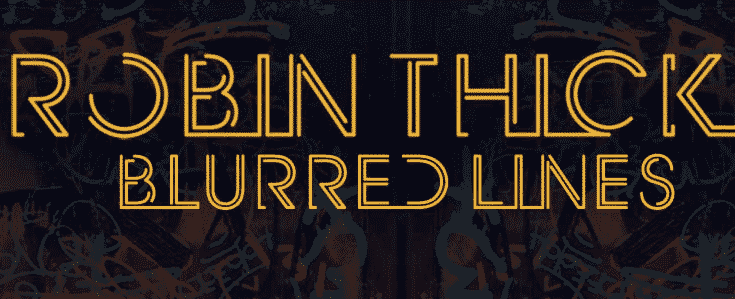6 Current Copyright Cases More Important Than Blurred Lines
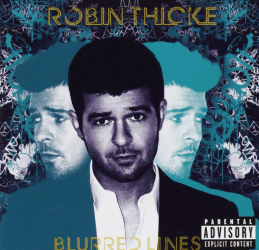 Recently, a jury awarded the estate of Marvin Gay $7.4 million in the Blurred Lines case, sparking a firestorm of publicity and media attention. With this attention came a lot of dire predictions about how the case would be the end of creativity in the music industry and could possibly kill off entire genres of music.
Recently, a jury awarded the estate of Marvin Gay $7.4 million in the Blurred Lines case, sparking a firestorm of publicity and media attention. With this attention came a lot of dire predictions about how the case would be the end of creativity in the music industry and could possibly kill off entire genres of music.
However, it’s highly unlikely that those dire predictions will come true. The outcome of the case was heavily dependent upon specific facts within it and it’s unlikely that it would be replicated by another case, even one very similar.
Still, it’s easy to see why the case got to much media attention. It was custom built to become a media frenzy featuring two hit songs, four very popular musicians and an eye-popping award that was made to be splashed across headlines.
However, most copyright cases aren’t anywhere near that sexy and a lot of them have a great deal of potential to have a practical impact on copyright in the United States, including very noticeable impacts on end users.
So, now that we’ve had a month to calm down from the Blurred Lines verdict, let’s take the time to briefly look at a few cases that could matter a lot more and could change the way you create, buy, stream, sell and view content.
1. The Raging Bull Case
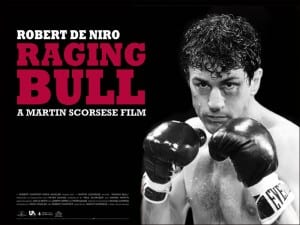 In the month since the Blurred Lines verdict, this case has been settled. Nonetheless, this case represents a fairly significant shift in thinking regarding the idea of laches and copyright.
In the month since the Blurred Lines verdict, this case has been settled. Nonetheless, this case represents a fairly significant shift in thinking regarding the idea of laches and copyright.
The case centers around the movie Raging Bull, which was based on works by Frank Petrella and Jake LaMotta, the film’s subject. When Petrella died his rights to the work went to his daughter, Paula Petrella, who learned of it in 1990. However, she waited until 2009 to file a lawsuit over the film’s continued distribution, alleging that MGM, the film’s distributor, did not have all of the rights to the story.
MGM put forth a laches defense. Laches is essentially an argument one party has waited so long to bring forth a claim that the claim itself should be barred. The lower courts agreed with MGM, but the Supreme Court took the case and ruled in favor of Petrella, saying that laches did not bar her claim since the infringement was ongoing. Petrella would be limited to collecting damages by the three year statute of limitations, but the claim could move forward.
That kicked the case back to the lower court, where questions about what works the movie was based on and what rights were assigned, but those questions were avoided when the case was abruptly settled.
Why It’s Important: The application of laches in copyright was a very divisive issue before the ruling. However, this ruling has paved the way for similar lawsuits to be filed, including a recent one over the Nike “Jumpman” logo.
The facts of Petrella’s case mirror a surprisingly large number of other potential lawsuits, so expect to see even more such cases in the not-too-distant future.
Why It Was Ignored: This case actually got a modest amount of mainstream coverage because of the popularity of the movie. But laches is a fairly complex and dull legal issue by itself and it still received only a fraction of the coverage Blurred Lines did.
2. Oracle/Google (or Java/Android) Case
 In 2010 Oracle filed a lawsuit against Google claiming that the search giant violated their copyrights and patents in the creation of the Android mobile operating system.
In 2010 Oracle filed a lawsuit against Google claiming that the search giant violated their copyrights and patents in the creation of the Android mobile operating system.
On the copyright side of things, the issue centered around the Java programming language’s application programming interface (API). An API is basically a set of instructions that tell an application how to interact with something else on the computer. Google, wanting to make Android accessible to JAVA developers, copied the Java API though nothing else from the language was copied.
Oracle sued claiming, in part, copyright infringement in the API. However, the lower court ruled that APIs could not be protected by copyright, siding with Google. Oracle then appealed that ruling, which was overturned. Google has now put the case before the Supreme Court, which in turn has asked for advice from the federal government.
Why It’s Important: The copying and reuse of APIs or elements from APIs is fairly common in programming. While Java is a programming language, these days almost every site, application, device or tool has an API that allows connected programs, devices, etc. to communicate with it.
While this likely won’t impact the use of an API for its intended function, many developers create APIs identical to or similar to others in the field to encourage others to create applications for it. If APIs are copyright protected and Google’s use is not a fair use, it could spell trouble for a lot of developers.
Why It Was Ignored: Explaining what an API is can be very difficult (so much sure I’m certain my explanation is inadequate). It’s a very complex technical term and it’s not something that directly impacts a large number of people outside of the tech community.
Still, this case has the potential to drastically change how various applications and devices talk to one another and could result in a great deal of additional litigation. If Oracle wins, its unlikely that this will be the last such lawsuit filed.
3. ASCAP/BMI Consent Decrees
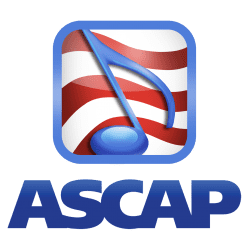 In 1941 the Department of Justice (DOJ) settled a lawsuit against the American Society of Composers, Authors and Publishers (ASCAP), a performing rights organization (PRO) that oversees royalties collected regarding performances of a musical composition. That settlement resulted in a consent decree that places strong restrictions on how ASCAP could operate and created a rate court system to settle royalty disputes.
In 1941 the Department of Justice (DOJ) settled a lawsuit against the American Society of Composers, Authors and Publishers (ASCAP), a performing rights organization (PRO) that oversees royalties collected regarding performances of a musical composition. That settlement resulted in a consent decree that places strong restrictions on how ASCAP could operate and created a rate court system to settle royalty disputes.
A similar consent decree was signed by Broadcast Music Inc. (BMI) in 1964, bringing both of the largest PROs under a very similar structure.
While I’ve discussed these consent decrees in greater detail here, they’ve come under fire in recent years as publishers have sought greater flexibility to negotiate royalties with streaming music services, including Pandora. The DOJ is now said to be reviewing those consent decrees with an eye on granting publishers many of their wishes.
These changes, if proposed by the DOJ and approved by the rate court judges, will drastically change the relationship between streaming music providers and PROs, leading, most likely, to higher royalties for PROs.
Why It’s Important: These consent decrees are at the heart of the music licensing business. Right now, they give a great deal of leverage to streaming music companies, who often end up never paying any royalties to PROs or reaching a final royalty agreement.
For most songwriters, this will likely mean more royalties from online services. For consumers, the outcome will depend on how streaming companies react and how the new negotiations break down.
If everyone is reasonable, the change could be minimal. But if things go poorly, we could see rate increases or more music companies exiting the market.
Why It Was Ignored: These consent decrees are invisible to most people. When you stream music on Pandora, you don’t think about the settlements that got the music there. They aren’t sexy, they aren’t simple to understand but they are vital to how you listen to music as everything from music in restaurants to digital streaming is covered under it.
4. The Turtles vs. The World
 When the U.S. government created the copyright act of 1909, it didn’t provide protection to sound recordings, which were scarce at the time. However, even as the recorded music industry grew, it was not added until 1972 and previous sound recordings were not placed under federal protection at that time.
When the U.S. government created the copyright act of 1909, it didn’t provide protection to sound recordings, which were scarce at the time. However, even as the recorded music industry grew, it was not added until 1972 and previous sound recordings were not placed under federal protection at that time.
This means that all sound recordings (not compositions, which are federally protected) are under a myriad of state laws. This came to a head in 2013 when members of The Turtles filed a lawsuit against satellite music service SiriusXM claiming that they were failing to pay royalties for publicly performing their music. However, since there is no federal protection, the lawsuit has instead been filed in a series of state courts, including New York, California and Florida.
To date, the band has actually scored several victories, with judges in California and New York both agreeing that there is likely a public performance right under their state’s laws. However, the Second Circuit has agreed to take the case, setting the stage for possible federal intervention in the lawsuit.
Why It’s Important: The wealth of music recorded before 1972 needs no introduction. This case, obviously, could have significant consequences regarding how, when, where and at what cost it is played.
But the potential implications go well beyond that. Serious questions arise as to how all federal laws apply to pre-1972 sound recordings, if they do at all. For example, the Digital Millennium Copyright Act, which protects hosts from liability for infringement by users, may not apply to such recordings. The issue was previously litigated, without a real resolution.
However, the biggest impact may be in the form of bills that address this issue, and could cause even larger shifts in the copyright landscape.
Why It Was Ignored: Like most music licensing elements, this is an arcane area of copyright law that has little direct impact on most people. Even explaining why pre-1972 sound recordings are treated different takes a great deal of time and energy. It also doesn’t help that the main lawsuit involves a band that isn’t as recognizable as the artists in the Blurred Lines case.
5. Dentures and Patents
 A company named Align Technology holds a series of patents relating to the Invisalign system, which is used to straighten teeth. A company named ClearCorrect, however, began infringing on those patents by having its offices in Pakistan do the “staging” of the appliances, which are sent back to the United States for 3D printing.
A company named Align Technology holds a series of patents relating to the Invisalign system, which is used to straighten teeth. A company named ClearCorrect, however, began infringing on those patents by having its offices in Pakistan do the “staging” of the appliances, which are sent back to the United States for 3D printing.
The case was brought before the U.S. International Trade Commission (ITC) where Align Technology sought to block the “importation” of the patent infringing technology, even though the importing was purely digital. The ITC ruled that it could block that importation, giving itself the ability to block content from being imported to the U.S. via the Web. However, the case is now on appeal to the Federal Circuit Court of Appeals.
While this is a patent case, the movie industry and others are watching it closely to see how it could impact copyright as the ITC also is responsible for blocking the importing of copyright infringing goods. As such, if the ITC has the power to block patent-infringing works over the Web, it could theoretically do the same with copyright-infringing ones as well.
Why It’s Important: If the ITC is ruled to have the authority to block digital imports into the United States, this could lead the ITC having broad authority to block and limit copyright infringing material being transmitted to the United States. How this would be applied is unknown, but it would be a potentially far-reaching power for an organization that has had little attention paid to it in other copyright matters.
The ITC, for its part, is downplaying the significance, saying that it’s just “a case about teeth.” But while it may be a case about teeth, most agree it’s a case that potentially has teeth of its own.
Why It Was Ignored: The ITC is relatively obscure, patent law isn’t sexy and, as the ITC said, this is a case about teeth.
The case actually got more attention among the 3D printing community and has only recently been noticed at all by the copyright community, despite the clearly possible implications.
All in all, it’s a bizarre case that only impacts copyright in a roundabout way, but it could be a very big way.
6. Ironman, Ghostface Killah and Sampling
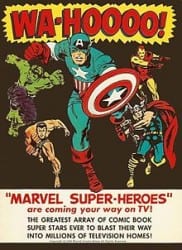 Finally, when the rapper Ghostface Killah released his album Supreme Clientele, he twice used samples from the 1960s TV show The Marvel Super Heroes, in particular the Iron Man Theme. However, the composer of that theme, Jack Urbont, sued the rapper and his label, Sony, over the sampling saying they didn’t have his permission.
Finally, when the rapper Ghostface Killah released his album Supreme Clientele, he twice used samples from the 1960s TV show The Marvel Super Heroes, in particular the Iron Man Theme. However, the composer of that theme, Jack Urbont, sued the rapper and his label, Sony, over the sampling saying they didn’t have his permission.
However, Sony hit back, not by just challenging the legitimately of the sample, but by claiming Urbont didn’t own the song. Urbont wrote the song for Marvel and was paid $3,000. However, he was not an employee of Marvel. Still, Sony argued that the song was a “work for hire” and that Marvel owned the rights to it. The judge recently agreed and awarded summary judgment to Sony, saying Urbont lacked the standing to sue.
What makes the case interesting because work for hire typically involves people who are direct employees, not independent contractors (at least not without explicit prior agreements, which there was none in this case). Further, Urbont not only was awarded a certificate of registration but, in 1990, in reached a settlement with Marvel that declared him the “owner” and Marvel the “licensee” of the song.
Why It’s Important: Work for hire is one of the thorniest issues on the web right now. More than ever people are working as independent contracts and consultants (myself included) often without explicit contracts, creating constant questions about who owns what.
This case, especially if this ruling stands, could be a major shift in the thinking about work for hire. An independent contractor with no agreement prior to start of work may no longer be the owner of the work, even if a settlement between them and their employer says so? It seems far-fetched, but the potential impact is very clear.
Why It Was Ignored: This one has been getting a fair amount of traction due to the big names involved, but the legal issues have largely fallen by the wayside. That’s because work for hire is very confusing and nuanced. Even the term “work for hire” is something of a misnomer.
While this case has a lot of elements for a great mainstream copyright story (well known musician, sampling, Marvel, super heroes, etc.) the legal issues it focuses on just aren’t as interesting as accusations of plagiarism and direct infringement.
Bottom Line
So, are all of these cases going to be major ones that shift the copyright landscape? Of course not. All of these are simply cases that have implications far beyond the dispute at hand and are being weighed on right now (or were very recently settled).
The problem with the Blurred Lines case is that, while it was very interesting, the ruling hinged on the specific facts, which were very unique to that case. It was a very sexy case for the media, with big names and big damages, but it is most likely a one-off deal, something that won’t be replicated (assuming it even survives appeal).
These cases, depending upon the outcome, could have drastic impacts for other content creators and content consumers alike. While the impact is impossible to predict beforehand, the potential is there.
So, while the media likes to obsess over celebrity feuds and allegations of plagiarism, the truth is that the cases that may actually make copyright history are lurking just under the surface.
Want to Reuse or Republish this Content?
If you want to feature this article in your site, classroom or elsewhere, just let us know! We usually grant permission within 24 hours.
